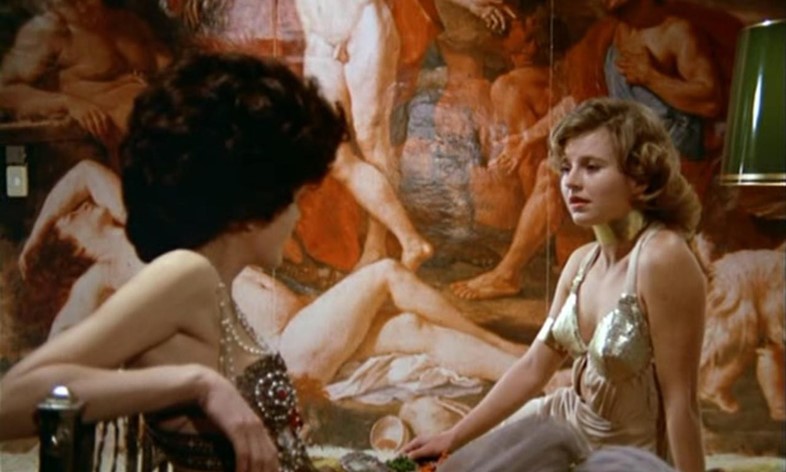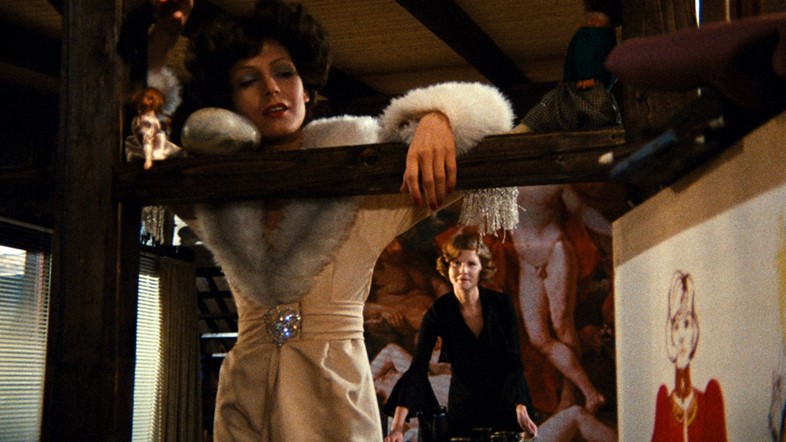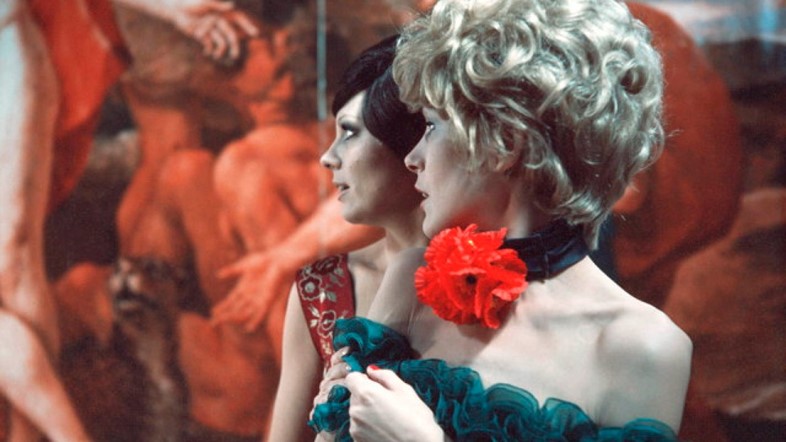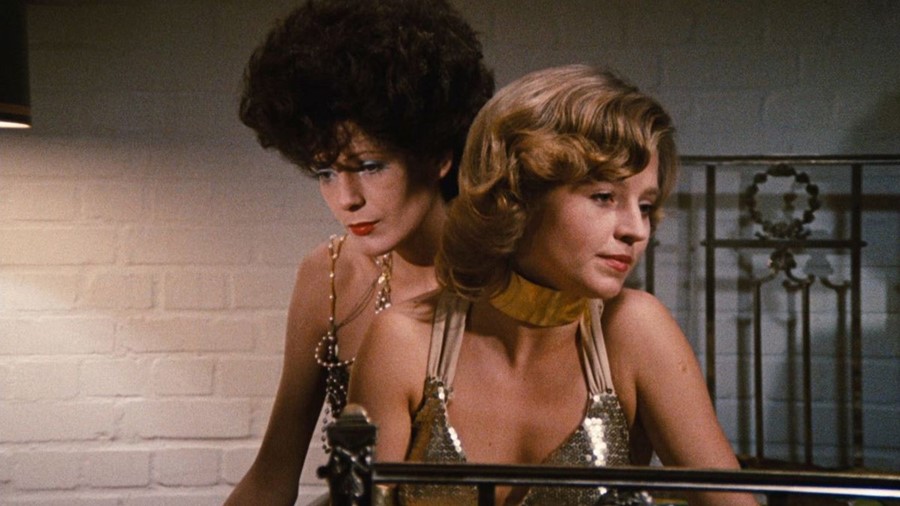Rainer Werner Fassbinder’s The Bitter Tears of Petra Von Kant sees spangly couture and silk dressing gowns collide, to unforgettable effect
Rainer Werner Fassbinder’s seminal 1972 psychodrama The Bitter Tears of Petra Von Kant is best known for its depiction of sapphic obsession, sexual jealousy and sado-masochism. The claustrophobic power struggles within an all-female landscape, restricted to the huis clos of Petra’s bedroom, have gone on to influence later films like Olivier Assayas’ Clouds of Sils Maria and Peter Strickland’s The Duke of Burgundy, among many others. Exploring fashion designer Petra Von Kant’s violent infatuation with ingenue Karin – alongside fraught familial ties, and the silent devotion of Petra’s assistant Marlene – the film plumbs the depths of human loneliness and passion, as inspired by Fassbinder’s own experience.
Much, rightly so, has been written about the film’s tense emotional register – but to any fashion fan the film’s real shining point is the splendidly baroque costumes provided by Maja Lemcke, which combine bold chevron prints, decadent evening wear, and delicate loungewear. Here, we round up the most important style lessons to be gleaned from the 1972 film.

1. When it comes to decor, more is more
Petra has a rather louche taste in decor, as evidenced by her bedroom, which is starkly devoid of functional furniture beyond a plush shag carpet, multiple dolls and mannequins, and a gigantic reproduction of Poussin’s Midas and Bacchus. Within this eclectic boudoir, a large gilt-frame bed serves as a focal point and as the visual manifestation of Petra’s sexual desires and frustrations. All of which goes to show that even in the most intimate of spaces, Petra is dedicated to honing a romantic self-image and keeping up appearances.
2. Make wigs your new wardrobe necessity
If you’re having an identity crisis, do so in style. Petra Von Kant slips in and out of wigs at every opportunity: as the film progresses we see her switch between voluminous chestnut curls, a flame-haired fringe, and icy blonde locks. Only at her lowest point — after rejecting her family and all but giving up on Karin — does Petra return to baring her natural hair.

3. Dress to kill every date night
At their first private meeting Petra and Karin are dressed for battle, with the metallic accents on both women’s outfits – and Karin’s wrist cuff specifically – calling Grecian armour to mind. Perhaps this is because in spite of Petra’s status as a celebrated designer and more advanced years, Karin is looking to stake a claim as the dominant force within their relationship. Unable to fight it out openly, their struggle is expressed through some serious power-dressing. Take it from these two: when it comes to affairs of the heart, never let your guard down.
4. Loungewear is the new eveningwear
If you aspire to emulate Petra Von Kant style, loungewear is crucial. Especially if, like her, you enjoy lounging in your bed well into the morning, anticipating that many a beautiful woman might drop by. Take a leaf out of her book and amp up the style appeal with a silk dressing gown with (faux) fur trim.

5. Revel in the choker’s subversive appeal
Don't assume that the choker has been relegated to the annals of trends-gone-by: the popular 1990s neckpiece is the perfect accessory for power play. At her disastrous birthday party, spent offending her family and waiting for Karin to call, Petra channels Manet’s Olympia with a dress in Belle Epoque style and a black choker with red embellishment. Unlike Manet’s subject, however, she’s not exactly the embodiment of sexual empowerment. Here, the choker is an unabashed signal of her devotion to the cult of Karin.
